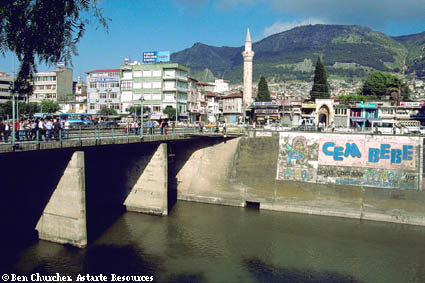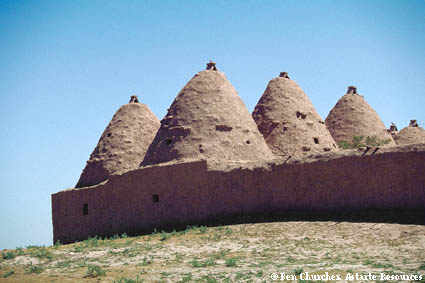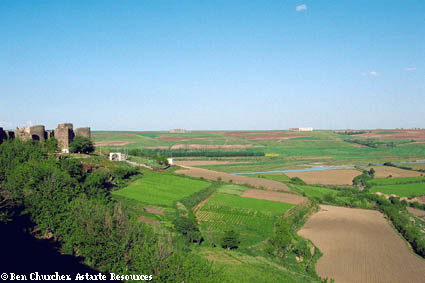|

|
The site of ancient Antioch, one of the Roman world’s most prosperous and influential cities, is today known as Antakya. Like its ancient counterpart, the modern city is still dominated by Mount Sipylus (where the ancient city had its acropolis) and the River Orontes. Beyond these reminders, little of ancient Antioch survives.
|
|

|
In the mid-first century AD a small Christian community met in a cave in the slopes of Mount Sipylus at Antioch. This was the first time that Christianity had appeared outside Judea and this cave is known as the world’s oldest church. It is named after St Peter who may have preached here between AD 47 and 54 when he lived in the Antioch.
|
|

|
Just to the north of the Syrian border is the ancient settlement of Harran. Known from the Old Testament as the town in which Abraham dwelt, it was also an important centre during the Crusader period. Now it is a provincial village with distinctive beehive roofed mud brick houses; an architectural style encouraged by the lack of timber roof beams.
|
|

|
Dominating the trade routes coming out of the Mesopotamian lowlands was the town of Urfa or ancient Edessa. Home to a very ancient Christian community it was also the first town to throw its lot in with the First Crusade making this the first Latin Kingdom in the region. In this photo Ottoman period mosques crowd the foreground while the walls of the citadel rise up in the background.
|
|

|
Below the citadel of Urfa or ancient Edessa is an area of fresh water springs. These springs have worked their way into local mythology. Nearby is a small cave revered by Muslims and Christians alike as the birthplace of the prophet Abraham, while the springs themselves are said to have been formed by the body of Abraham after he was thrown there from the citadel by evil King Nimrod.
|
|

|
This bridge over the River Cendere near Nemrut Dagi in Central Turkey was built during the reign of the Roman Emperor Septimius Severus between AD 198 and 200. Although it has been in use for hundreds of years and has been renovated many times it still retains much of the original Roman construction. A newer bridge, just visible to right, has now been built.
|
|

|
A view from the black basalt walls of Diyarbakir , a major provincial town just to the north of the Syrian border. The walls were built during the Byzantine period and overlook the Tigris River that can be seen in the distance.
|
|

|
The city of Diyarbakir remains an important Kurdish-dominated town in south-east Turkey, but it was also, in the past, a major centre for Christian Armenians. During the movement against the Armenians in the late nineteenth and early twentieth century, the local Christian population was decimated and dispersed. This photo shows the ruins of an Armenian Church, now roofless and in ruin, but still locked up and under the care of an elderly guardian, one of the last of the Christians of Diyarbakir.
|
|

|
While the Armenian population of Diyarbakir has vanished with the course of the twentieth century, a small Christian community lingers on in the city. These Christians mostly belong to two denominations and give allegiance to either the Syrian Orthodox Patriarch (now based in Antakya - ancient Antioch), or as in the case of this photo, the Roman Catholic Church. However the Christian population is now confined to a few families and these churches have seen their once full congregations dwindle to a handful of elderly people.
|
|
Please select another section
PART I: TURKEY: THE SOUTH COAST
PART III: TURKEY: LAKE VAN REGION
|

